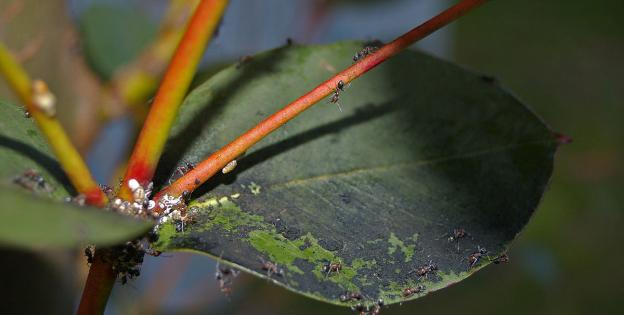- When cannabis plants show signs of fungal or parasitic infection, the situation is often easily reversed through prompt action. However, when the problem is stunted growth with no additional signs of anything unusual happening, things start to get complicated.
- Caused by a variety of plant pathogens, root rot can be described as a group of diseases that attack the roots of plants.
- Keep reading to find out more about root rot, its symptoms and the measures you can take to stop the disease from ruining your cannabis plants.

What is root rot?
Root rot is a group of diseases that attack both indoor and outdoor plants, among which also cannabis. These can be caused by a number of different plant pathogens including bacteria (Acidovorax, Agrobacterium, Burkholderia, Clavibacter, Erwinia), nematodes (Tylenchulus, Pratylenchus, Heterodera, Globodera) and fungi (Rhizoctonia, Phytophthora, Fusarium, Pythium).
Most times, however, the condition is caused by a fungus, a microorganism that breeds easily by dispersing spores and sclerotia (a mass of mycelial filaments) and that can survive in the soil for long periods of time even under unfavourable environmental conditions.

One factor that contributes to root rot is poor soil drainage, as a well oxygenated substrate is essential to ensure healthy plant growth.
The disease mainly attacks seeds and seedlings – damping off is a common gardening problem – as these are more vulnerable and have a weaker immune system than full-grown plants.
Hydroponic systems are another common victim of root rot. This is because the tank containing the nutrient solution gets infected easily, contaminating the whole watering system and, ultimately, also the plants.
What are the symptoms of root rot?
Common symptoms include:
- As the disease progresses, roots change from white to increasingly darker shades of brown.
- Plants fail to correctly absorb nutrients.
- Plant growth is stunted.
- Leaves yellow gradually, as if affected by a nutrient deficiency.
- Leaf margins become necrotic and curl, causing the entire leaf to dry out and fall.
- Plants die.
Symptoms of Rhizoctonia:
Rhizoctonia often leads to damping off, and can cause healthy roots to decay from the middle up to the base of the stem. In some cases, the fungus can also attack the leaves.
Characteristics:
- Leaves grow to a smaller size and yellow gradually.
- Plants become stunted and wilt.
- The base of the main stem develops ulcers, and the leaves and stems show brownish spots.
- Roots decay, gradually getting covered in a dark, viscous fluid.
- If the humidity stays high constantly, a mass of filaments may emerge from the soil, invading the plant up to the leaves.
Symptoms of Phytophthora:
Plants affected by Phytophthora show stunted growth, along with symptoms similar to that of Pythium, but more severe.
Characteristics:
- Leaves wilt, yellow and drop off.
- The base of the stem develops brownish/reddish ulcers.
- The bark of stems and the leaves, too, turn brownish/reddish.
- The roots become dark in colour – this can only be observed by digging them up.
- The disease spreads quickly from plant to plant.
Symptoms of Fusarium:

Fusarium species attack the roots, the base of the stem and, occasionally, also leaf sheaths, which get covered in a dark, reddish rot. All of which leads to stunted plant growth.
Symptoms of Pythium:
Pythium infections, too, lead to stunted growth.
Characteristics:
- The plant loses vigour and wilts – partly or in full.
- The corolla gets covered in a blackish, wet rot.
How to prevent root rot
- Whether you grow indoors or outdoors, always try to verify the quality and origin of your substrate.
- Use a well aerated soil mix to ensure proper oxygenation.
- If you grow indoors, keep the grow room scrupulously clean at all times.
- Check the cleanliness of the pots before sowing.
- Water regularly, keeping to a strict schedule and avoiding overwatering.
- Apply a root booster once a week to encourage a healthy root system.
- Remember that poor ventilation and high humidity can easily lead to root rot.
How to combat root rot
Unfortunately, the diseases causing root rot are hard to eradicate completely. While the above measures may prevent the onset and progression of the disease, severe infections can only be addressed by discarding the crop entirely, starting from scratch with new, healthy plants. Otherwise, you can end up losing precious time applying treatments that won't fully solve the problem, leading to weak, stunted, ill-looking plants.
Organic treatments: Gardening shops offer a wide variety of organic fungicides based on other fungi and bacteria, such as Streptomyces griseoviridis, which protect the roots against fungal attacks.
These biofungicides are effective against most root rot-causing organisms, and can also be used preventively on both plants and seeds. Usually supplied in the form of wettable powder, they can be applied to the substrate as a spray or soil drench, through capillary absorption or added to the tank of drip irrigation systems. Apply once every 2-5 weeks based on the severity of the infection.
Chemical treatments: If the infection is at an advanced stage, chemical products will prove ineffective. The only solution here is to discard the entire crop and start anew after thoroughly cleaning the grow tools and room, which should be further protected with a preventive antifungal treatment. You'll see that your next grow will thrive like no other.
Happy harvesting!





Comments from our readers
There are no comments yet. Would you like to be the first?
Leave a comment!Did you like this post?
Your opinion about our seeds is very important to us and can help other users a lot (your email address won't be made public).